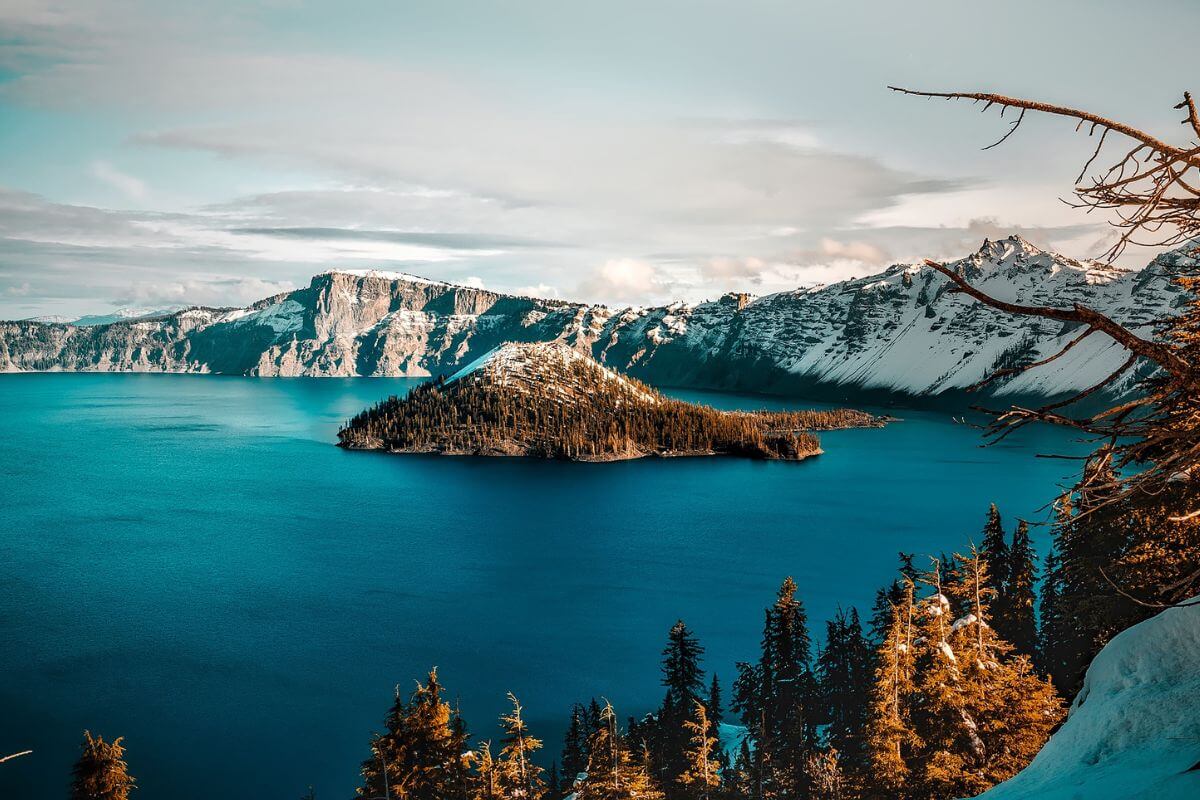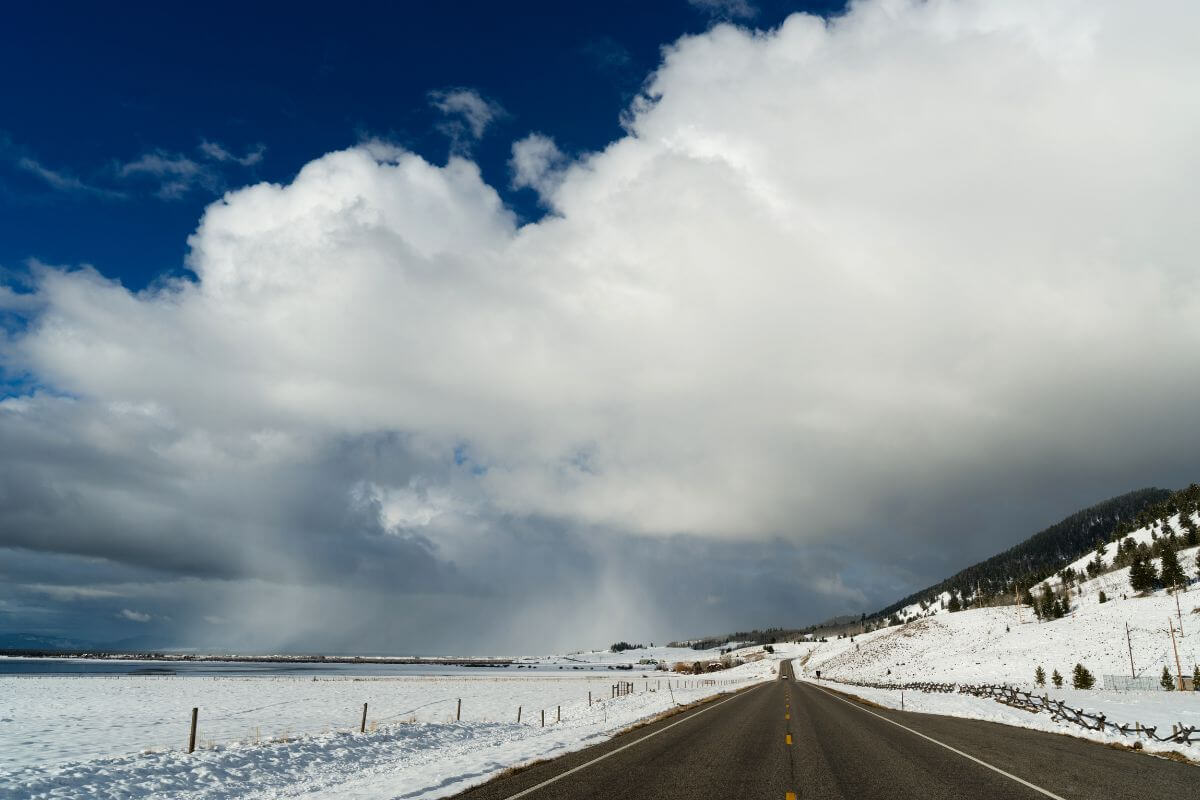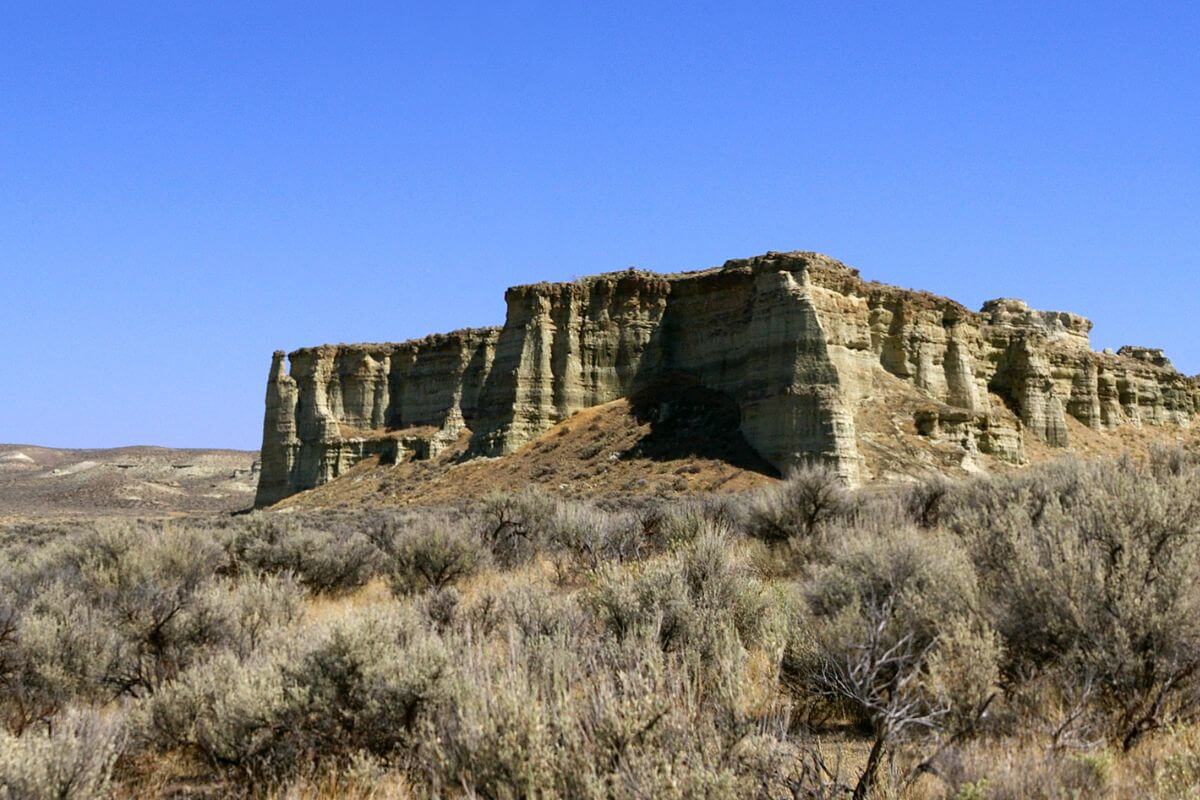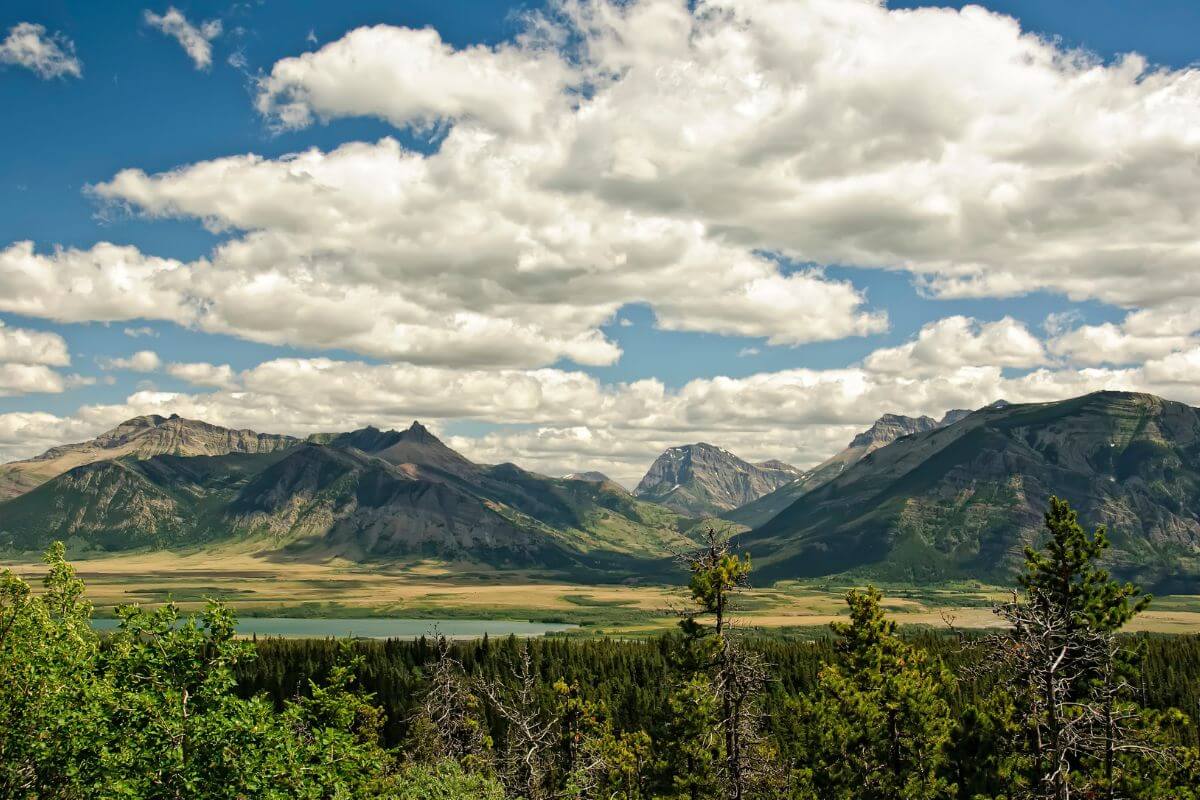Hey there! Planning to escape the daily grind and explore the breathtaking wonders of nature? Well, look no further than the majestic states of Montana and Oregon.
In this article, I’ll guide you through the enchanting landscapes, vibrant towns, thousands of miles of forest land, and distinctive features that make these states a nature lover’s paradise.
Montana and Oregon both offer a variety of beautiful natural wonders. Whether you love clear blue lakes or dense green forests, these states have something mesmerizing for everyone.
I know what you’re wondering, “Which state should I choose?”
Curious to discover the contrasts between Montana and Oregon? Let’s delve into the landscapes, activities, and hidden gems each state has to offer.
So, grab your hiking boots, buckle up, and embark on this thrilling journey to uncover which state is better suited for your wanderlust-filled soul.
Montana vs Oregon: Why Are They Being Compared?

Montana and Oregon both attract outdoor enthusiasts with stunning landscapes, lively towns, and distinctive qualities. Choosing between these two states can be difficult due to their abundant offerings.
To make a fair comparison, let’s explore various factors such as population, cost of living index, and weather to the number of national parks these states have.
Montana vs Oregon: Size and Population

Montana is famous for its breathtaking “Big Sky” scenery, where expansive landscapes seem to go on endlessly. It ranks as the fourth-largest state in the nation. Its capital city is Helena.
In contrast, Oregon holds the distinction of being the 10th largest state in the United States. The capital city of Oregon is Salem.
Although Montana possesses a considerable expanse of land, its population is comparatively modest.
Oregon, on the other hand, surpasses Montana’s population by more than threefold.
To examine the land area and population figures, let’s refer to the following table:
| State | Montana | Oregon |
| Land Area (in square miles) | 147,040 | 98,379 |
| Population | $1,122,867 | $4,240,137 |
Montana vs Oregon: Lifestyle and Cost of Living

Let’s compare Oregon and Montana in terms of lifestyle and cost of living, exploring various aspects such as housing units, educational attainment, retail sales, transportation, income levels, and poverty rates.
By doing so, it provides a comprehensive understanding of the lifestyle and economic dynamics in each region. Here are the factors and data for comparison:
1. Housing and Rent – In terms of housing, Oregon boasts a larger number of housing units in comparison to Montana. It however has higher housing costs.
| Housing and Rent | Montana | Oregon |
|---|---|---|
| Housing Units | 529,152 | 1,859,387 |
| Owner-occupied Housing Unit Rate | 69.1% | 63.2% |
| Median Value of Owner-occupied Housing Units | $263,700 | $362,200 |
| Monthly Owner Costs with Mortgage | $1,538 | $1,840 |
| Monthly Owner Costs without Mortgage | $476 | $587 |
| Median Gross Rent | $886 | $1,250 |
2. Education – Oregon has a slightly higher percentage of individuals with a bachelor’s degree or higher than Montana.
| Education | Montana | Oregon |
|---|---|---|
| High School Graduates or Higher | 94.4% | 91.5% |
| Bachelor’s Degree or Higher (persons aged 25 years and older) | 33.7% | 35.0% |
3. Economy – Oregon significantly surpasses Montana in total retail sales.
| Economy | Montana | Oregon |
|---|---|---|
| Civilian Labor Force Participation Rate (population aged 16 years and older) | 62.9% | 62.5% |
| Female Civilian Labor Force Participation Rate | 59.4% | 58.4% |
| Total Retail Sales (2017) | $16,935,827 | $61,699,338 |
4. Health Care – In Montana, a slightly higher percentage of people don’t have health insurance compared to Oregon. Additionally, healthcare costs in Montana are higher than in Oregon.
| Health Care | Montana | Oregon |
|---|---|---|
| Disability (people under 65 years old have a disability) | 9.3% | 10.2% |
| No Health Insurance | 10.1% | 7.3% |
| Average Individual Health Insurance Cost (per person) | $539 | $459 |
5. Transportation – The mean travel time to work is shorter in Montana compared to Oregon. For transportation costs, Montana also provides cheaper expenses than Oregon.
| Transportation | Montana | Oregon |
|---|---|---|
| Mean Travel Time to Work in Minutes (workers aged 16 years and older) | 18.6 | 23.7 |
| Monthly Public Transit Pass Cost | $36.00 | $53.89 |
6. Salary – Oregon shines with higher median household income and per capita income compared to Montana.
| Salary | Montana | Oregon |
|---|---|---|
| Median Household Income | $60,560 | $70,084 |
| Per Capita Income | $34,423 | $37,816 |
7. Poverty – This indicates that a significant portion of the population in both states faces economic challenges and struggles with meeting basic needs.
| Poverty | Montana | Oregon |
|---|---|---|
| The Population of People Living in Poverty | 11.9% | 12.2% |
8. Child Care – For cost comparison, it is more expensive to raise a child in Oregon than in Montana. The monthly actual costs can vary depending on the size of the family.
| Child care | Montana | Oregon |
|---|---|---|
| Cost of Child Care Monthly | $1,559 | $1,726 |
| Annual Child Care Cost | $18,707 | $20,716 |
9. Utilities – With a $49 difference in cost, utilities in Oregon are slightly more expensive than those in Montana.
| Metric | Montana | Oregon |
|---|---|---|
| Cost of Utilities for a 700 sq ft Apartment outside city center | $100.67 | $149.72 |
Montana vs Oregon: Weather and Terrain

When it comes to weather, Montana and Oregon offer distinct experiences.
1. Summer – Summer months are from July through September.
In Montana, summers are generally delightful with dry and sunny days, occasional clouds, and gentle rain showers with temperatures between 75-90°F, with the possibility of heat waves reaching the low 100s °F.
Thunderstorms may occur, especially in eastern Montana, where dry thunderstorms pose a wildfire risk.
On the other hand, summers in Oregon are warm, but not excessively hot. On the west coast, average temperatures range from 64-68°F, while the eastern part of the state experiences hotter temperatures of 81-94°F.
Rainfall can occur unexpectedly in Oregon, so it’s advisable to carry rain gear. July is the hottest month, and temperatures can surpass 100°F.
2. Fall – Fall starts usually sometime in late September and will run into November.
Fall weather in Montana begins in late September and extends into November. It can be quite variable, with weeks of Indian summer followed by cold rain and sporadic snow showers.
Autumn in Oregon remains warm in September, with temperatures around 85°F. The weather gradually becomes rainy, accompanied by fog.
In Oregon, by October, temperatures range from 55-70°F, and in November, they drop further to 48-55°F. The nights become colder, but the beauty of nature’s vibrant colors compensates for it.
3. Winter – Winter starts in late October or early November through to late April or early March.
Eastern Montana tends to experience colder weather than the western part of the state, as the first cold air of the season moves in from Canada. Winter weather in Montana showcases extreme variations across the state.
Areas east of the Continental Divide can endure below-zero temperatures, while western cities like Missoula and Kalispell enjoy relatively milder conditions, with temperatures often 50 degrees higher.
Western Montana receives more snowfall compared to the eastern region, and strong winds and blowing snow are common in the east.
Winter in Oregon sees the Cascade Mountains experiencing the coldest temperatures, with lows of 18°F. The rest of the state enjoys milder weather, with temperatures ranging from 37°F to 42°F.
The coastal areas of Oregon have the warmest climate during winter, but snowstorms and blizzards can still make their presence felt.
4. Spring – Spring arrives in Montana from March through May, while in Oregon, it extends from April through June.
Spring in Montana brings both delight and unpredictability. Snowfall may continue throughout the season, albeit gradually lessening. Rain becomes prevalent in May and June, preventing forest fires and providing moisture for the valleys.
Western Montana warms up slowly, experiencing cloudy days, cool air, and light spring showers. In contrast, eastern Montana warms up faster, occasionally experiencing scorching weather.
In Oregon, the weather takes on a different character. Spring is characterized by wet and mild conditions. Temperatures gradually increase from March, ranging from 19°F to 57°F, with the possibility of frost in the mountains.
April brings warmer temperatures of 53-62°F with cool nights, while May offers comfortable temperatures of 50-75°F and occasional thunderstorms in mountainous areas.
Now, let’s explore and compare the diverse terrains found in Montana and Oregon.
Montana boasts the majestic Rocky Mountains that cover its western third. The rest of the state showcases gentle rolling hills that contribute to its picturesque landscapes.
It is home to national parks like Yellowstone and Glacier National Park. Whether you’re exploring the rugged mountains or the serene hills, the state’s terrain offers a diverse and breathtaking experience.
- Read more about Montana’s Famous Features
On the contrary, Oregon offers a diverse landscape. From elevated desert plateaus and lush evergreen forests to its stunning coastline adorned with sandy beaches and cliffs, Oregon’s natural beauty is truly awe-inspiring.
Oregon is home to The Newberry National Volcanic National Monument which encompasses over 54,000 acres of stunning natural attractions, including lakes, lava flows, and remarkable geological formations.
Whether you find yourself exploring waterfalls or immersing yourself in dense forests, Oregon’s terrain never fails to inspire awe.
Natural Resources and Wildlife

When it comes to natural resources and wildlife, both Montana and Oregon have plenty to offer.
In Montana, you’ll find an abundance of resources like palladium, platinum, copper, molybdenum, garnets, silver, bentonite, and gemstones.
It’s also the only producer of palladium and platinum in the country. These resources play a crucial role in Montana’s economy, supporting industries such as mining, manufacturing, and construction.
In addition to its resources, Montana is home to a diverse wildlife. From the grizzly bear to beavers, deer, ground squirrels, and rabbits, the state’s rich wildlife population is a testament to its thriving ecosystems.
Oregon is known for being the only producer of emery in the U.S. and a major producer of common clay, diatomite, perlite, bentonite, gemstones, and zeolites.
Some culinary salt is even produced from the abundant seawater in the area. When it comes to wildlife, Oregon is home to an array of species.
The state’s wildlife population is diverse and thriving from the Canada lynx and the gray wolf to the Pacific marten, Columbia white-tailed deer, and North American wolverine.
Montana State University vs Oregon State University

Montana State University (MSU) and Oregon State University (OSU) offer unique educational experiences in different locations for their students.
Let’s take a look at a comparison table highlighting the key differences between Montana State University (MSU) and Oregon State University (OSU).
This table provides an overview of various aspects such as location, setting, student enrollment, national rankings, and institutional characteristics
| Aspect | Montana State University (MSU) | Oregon State University (OSU) |
|---|---|---|
| Location | Bozeman, Gallatin County, MT | Corvallis, OR |
| Setting | Remote town | Small City |
| Student Enrollment | 16,788 | 33,193 |
| National Ranking | #527 | #349 |
| Type | Public | Public |
| Non-profit | Yes | Yes |
| Religious Affiliation | None | None |
Montana vs Oregon Final Thoughts

In terms of size and population, Montana is the fourth-largest state in the nation, boasting vast landscapes and a relatively smaller population. Oregon, although smaller in land area, has a significantly larger population than Montana.
When it comes to lifestyle and cost of living index, Oregon generally has higher housing costs, utilities, transportation expenses, childcare expenses, education levels, and retail sales compared to Montana.
When it comes to weather and terrain, both states have their own distinct characteristics. Montana showcases the majestic Rocky Mountains, while Oregon offers diverse landscapes ranging from coastal areas to lush forests.
In terms of higher education, Oregon State University (OSU) has a larger student population and holds a higher national ranking compared to Montana State University (MSU).
Ultimately, the decision between Montana and Oregon depends on individual preferences and priorities, including how the cost of living compares to other economic factors.
Montana offers wide-open spaces, a lower population density, and potentially lower living costs. On the other hand, Oregon has a more diverse population, vibrant cities, and a milder climate.
Considerations such as cost of living difference, outdoor activities, career opportunities, education, and personal preferences should be considered when determining which state may be better.
Montana vs Oregon FAQs
1. Which State Surpasses the Other in Terms of Quality, Montana or Oregon?
When deciding between Montana and Oregon, personal preferences and priorities play a crucial role.
Montana provides expansive landscapes, lower population density, and potentially lower living costs, whereas Oregon offers a diverse population, vibrant cities, and a milder climate.
It is important to consider factors such as cost of living, outdoor activities, career opportunities, education, and personal preferences in order to determine which state may be more suitable.
2. What Does the Cost of Living Index Represent?
The cost of living refers to the expenses required to maintain a basic standard of living, including housing, food, taxes, and healthcare, within a specific location and timeframe.
It serves as a metric for comparing the affordability of different cities or areas.
3. How Distant Is Oregon From Montana?
Oregon and Montana are approximately 874 miles apart when measuring the direct distance between the two states.
Traveling by car, the estimated driving time is around 13-15 hours, depending on the specific route and traffic conditions.
Other modes of transportation, such as flying, would significantly reduce the travel time, with the flight duration typically ranging from 2 to 3 hours, depending on the airports and layovers involved.
4. Between Montana and Oregon, Which State Provides a Lower Cost of Living?
Montana generally offers a lower cost of living compared to Oregon. It also has lower housing costs and lower monthly owner costs with a mortgage. Additionally, Montana’s utilities, transportation, and childcare costs tend to be lower.
However, it’s important to consider that the cost of living index can vary depending on individual circumstances, specific locations within each state, and personal preferences.
5. What Is Oregon Renowned For?
Oregon is renowned for its natural beauty, including its stunning coastline, forests, and mountains.
The state is also famous for its thriving craft beer and wine industry, with numerous breweries and wineries producing high-quality beverages.
Additionally, Oregon is known for its progressive and environmentally conscious culture, as well as its vibrant arts and music scene.
If you want to explore Montana further, make sure to stay engaged with these articles:
- https://www.census.gov/geographies/reference-files/2010/geo/state-area.html
- https://www.census.gov/quickfacts/OR
- https://www.census.gov/quickfacts/MT
- https://www.usgs.gov/centers/national-minerals-information-center/mineral-industry-montana
- https://www.usgs.gov/centers/national-minerals-information-center/mineral-industry-oregon
- https://www.fws.gov/office/oregon-fish-and-wildlife/species
- https://www.nps.gov/yell/index.htm
- https://www.nps.gov/glac/planyourvisit/index.htm
- https://www.fs.usda.gov/visit/destination/newberry-national-volcanic-monument-0

